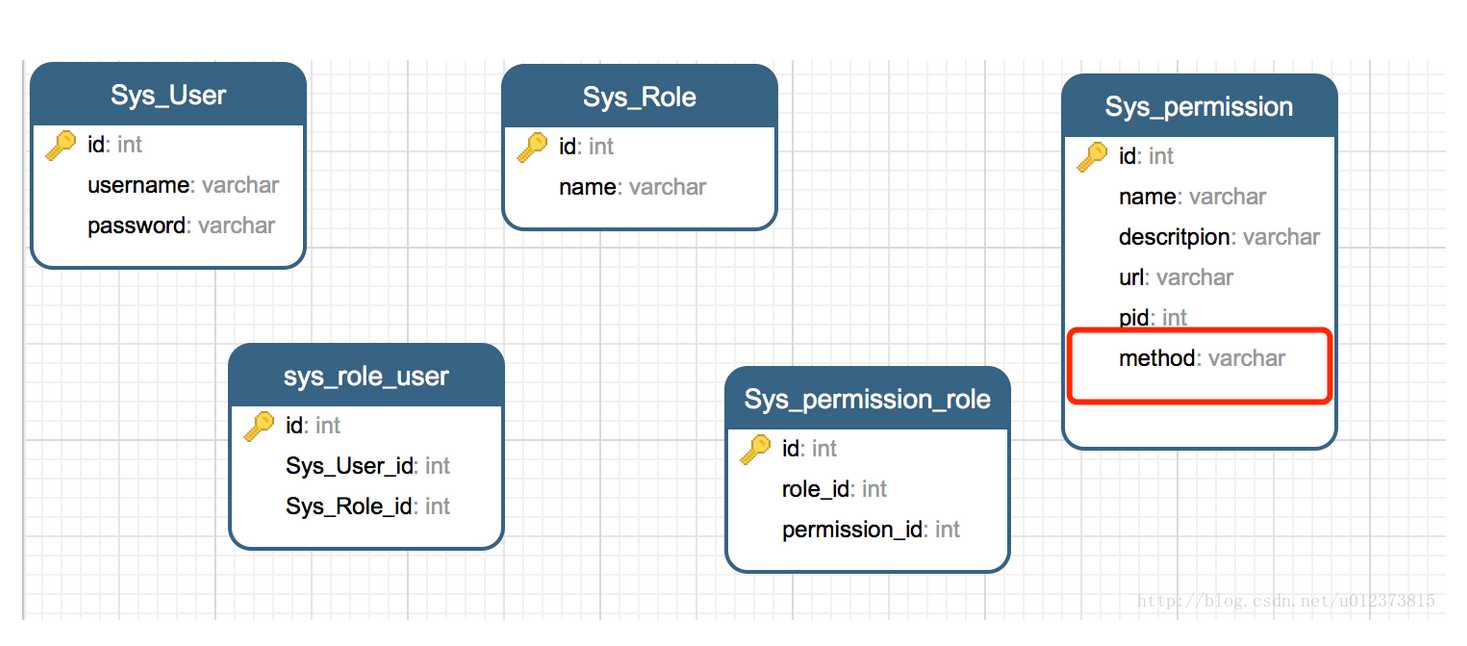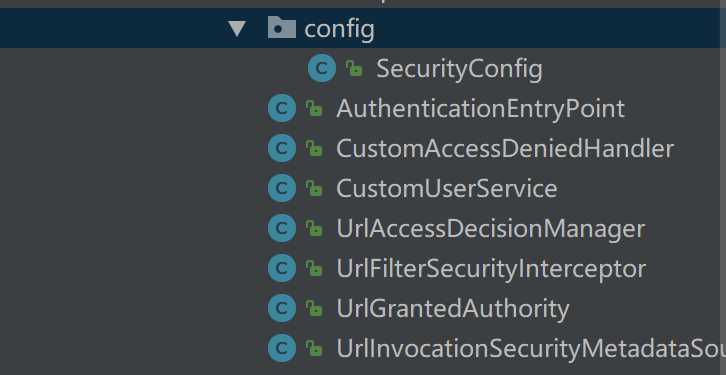spring security使用和原理简析(1)
2020-12-13 03:19
标签:sed ssi 角色 相同 定义 maximums 调用 gis put 主要参考:https://blog.csdn.net/u012373815/article/details/55225079 源码参考:https://github.com/527515025/springBoot 1:实现了用户、角色、权限的动态管理,可以管控到接口地址,已经访问方式(get,post) 2:自定义登录接口 3:结合spring-session,来保存用户登录信息 method来控制相同方法名的不同访问方式(get,post,put等) 废话不多说,看一下实现功能的核心代码 完整的项目代码,除了登录可以在https://github.com/527515025/springBoot中的springboot-SpringSecurity3中找到 以上就实现了用户、角色、权限的动态管理,接下来我们简单的探究一下原理 spring security使用和原理简析(1) 标签:sed ssi 角色 相同 定义 maximums 调用 gis put 原文地址:https://www.cnblogs.com/jiataoq/p/11073390.html项目需求
表结构说明

项目结构

SecurityConfig核心方法


protected void configure(HttpSecurity http) throws Exception {
http.csrf().disable()
//访问未授权资源的异常,403
.exceptionHandling().authenticationEntryPoint(unauthorizedHandler).and()
//登录后访问未配置权限资源的异常,401
.exceptionHandling().accessDeniedHandler(accessDeniedHandler).and()
.authorizeRequests()
//匿名用户也可以访问的资源
.antMatchers("/api/v1/auth").permitAll()
.antMatchers("/logout").permitAll()
.antMatchers("/**","/swagger-resources/**","/translate_a/**","/doc.html", "/webjars/**", "/v2/**", "/META-INF/resources/webjars/","/META-INF/resources/").permitAll()
.anyRequest().authenticated()
.and()
//开启session,同时只能登录一个用户
.sessionManagement().maximumSessions(1).sessionRegistry(sessionRegistry)
.and()
.and()
.logout().logoutUrl("/api/v1/logout")
.invalidateHttpSession(true)
.clearAuthentication(true)
.and()
.httpBasic();
}
UrlFilterSecurityInterceptor核心方法


@Override
public void doFilter(ServletRequest request, ServletResponse response, FilterChain chain) throws IOException, ServletException {
FilterInvocation fi = new FilterInvocation(request, response, chain);
invoke(fi);
}
public void invoke(FilterInvocation fi) throws IOException, ServletException {
//fi里面有一个被拦截的url
//里面调用MyInvocationSecurityMetadataSource的getAttributes(Object object)这个方法获取fi对应的所有权限
//再调用MyAccessDecisionManager的decide方法来校验用户的权限是否足够
InterceptorStatusToken token = super.beforeInvocation(fi);
try {
//执行下一个拦截器
fi.getChain().doFilter(fi.getRequest(), fi.getResponse());
} finally {
super.afterInvocation(token, null);
}
}
UrlAccessDecisionManager核心方法


public void decide(Authentication authentication, Object object, Collection
登录接口


@PostMapping("/auth")
@ApiOperation(value = "用户登录接口")
public ApiResponse